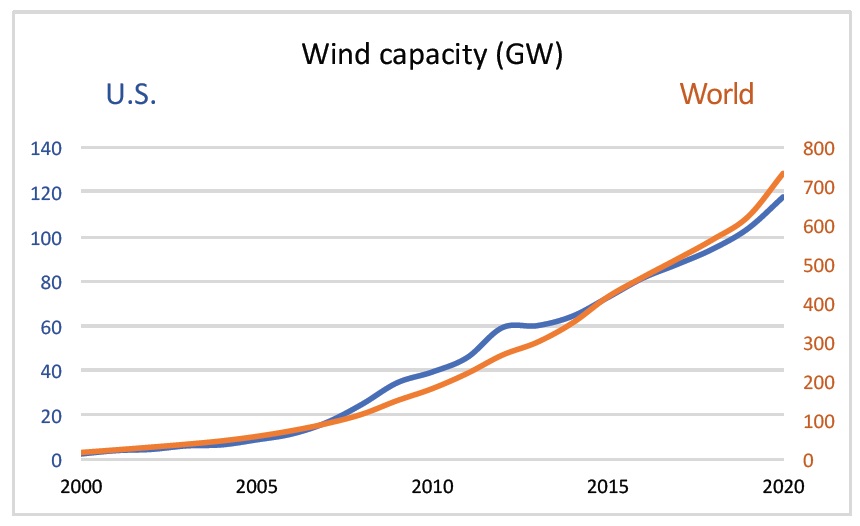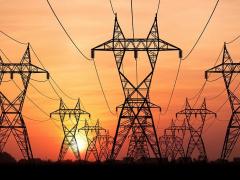by Fereidoon P. Sioshansi, PhD, Menlo Energy Economics
The Massachusetts Institute of Technology’s (MIT’s) Future of Energy Storage report, released in mid-May 2022, examines the central role of energy storage in deeply decarbonised energy systems with high penetrations of variable renewable energy (VRE). It says the obvious, namely, that energy storage is needed to keep the lights on when the sun isn’t shining, and the wind isn’t blowing.

The multidisciplinary report from the MIT Energy Initiative (MITEI) urges government investment in sophisticated analytical tools for planning, operation, and regulation of electricity systems to deploy and use storage efficiently. Because storage technologies will have the ability to substitute for or complement essentially all other elements of a power system, including generation, transmission, and demand response, these tools will be critical to electricity system designers, operators, and regulators in the future.

The basics are easy to understand. Energy storage enables cost-effective deep decarbonisation of electric power systems that rely heavily on wind and solar generation without sacrificing system reliability.
Energy storage can be characterised by its:
- Maximum instantaneous power, measured in MW;
- Its energy storage capacity, measured in MWh); and
- Its round-trip efficiency (RTE), measured as the fraction of energy used for charging storage that is returned upon discharge.
The ratio of energy storage capacity to maximum power yields a facility’s storage duration, measured in hours – this is the length of time over which the facility can deliver maximum power when starting from a full charge. Most currently deployed battery storage facilities have storage durations of 4 or fewer hours; most existing pumped storage hydro (PSH) facilities have durations of 8 to 12 hours or more.

Storage technologies also differ in energy density, which is the maximum amount of energy that can be stored per unit volume. Battery technologies with high energy density are particularly well-suited for use in electric vehicles (EVs) and mobile electronics. Technologies with lower energy density can nonetheless be used for storage in electricity system applications where the efficient use of space is not critical. Energy storage technologies also differ in a number of other attributes.
The technologies considered in the MIT report fall into three main groups based on their power and energy capacity costs (see Figure 4). Generally, technologies with low energy- capacity costs and high power-capacity costs are most suitable for longer duration storage applications (up to multiple days) and less frequent charge-discharge cycles; these include thermal, chemical, metal-air battery, and pumped hydro storage options. Technologies in the brown area, including lithium-ion batteries, are better suited to shorter duration applications (a few hours) and more frequent cycling. The blue region, with high power and low energy capacity costs, includes thermal, chemical (e.g., hydrogen), metal-air battery, and pumped storage hydro technologies. Lithium-ion batteries fall in the brown area, with low power, but high energy-capacity costs; flow batteries fall in the intermediate, green region.

The report shows that energy storage makes deep decarbonisation of electric power systems possible and affordable. “Fossil fuel power plant operators have traditionally responded to demand for electricity — in any given moment — by adjusting the supply of electricity flowing into the grid,” says MITEI Director Robert Armstrong, chair of the Future of Energy Storage study. “But VRE resources such as wind and solar depend on daily and seasonal variations as well as weather fluctuations; they aren’t always available to be dispatched to follow electricity demand. Our study finds that energy storage can help VRE-dominated electricity systems balance electricity supply and demand while maintaining reliability in a cost-effective manner—that in turn can support the electrification of many end-use activities beyond the electricity sector.”
The study, which took three years to complete, offers a path to developing and deploying electrical energy storage technologies to encourage electrification and decarbonisation throughout the economy while minimising costs. Focusing on three regions of the USA, the study shows the need for a varied approach to energy storage and electricity system design in different parts of the country to 2050. The results are applicable to emerging market and developing economy (EMDE) countries such as India (and South Africa – ed.).
These countries are expected to see massive growth in electricity demand over the next 30 years, due to rapid economic expansion and to increasing adoption of electricity-consuming devices such as air conditioning. Many EMDE countries lack access to low-cost gas and currently rely on coal generation. The report notes that investment in VRE combined with storage is preferable to new coal generation over the medium and long term while recognising that existing coal plants may linger unless forced out by policy measures such as carbon pricing.
“Developing countries are a crucial part of the global decarbonisation challenge,” says Robert Stoner, one of the report authors. “Our study shows how they can take advantage of the declining costs of renewables and storage in the coming decades to become climate leaders without sacrificing economic development and modernisation.”
The MIT study examines four types of storage technologies in considerable technical detail including:
- Electrochemical
- Thermal
- Chemical
- Mechanical
Some technologies, such as lithium-ion batteries, pumped storage hydro, and some thermal storage options, are proven and available for commercial deployment. The report recommends that the government focus R&D efforts on other storage technologies, which will require further development to be available by 2050 or sooner — among them, projects to advance alternative electrochemical storage technologies that rely on earth-abundant materials.

The report says many existing power plants that are being shut down can be converted to useful energy storage facilities by replacing their fossil fuel boilers with thermal storage and new steam generators. This retrofit can be done using commercially available technologies and may be attractive to plant owners—using assets that would otherwise be abandoned as electricity systems decarbonise.
The study also looks at hydrogen and concludes that its use for storage will likely depend on the extent to which hydrogen is used in the overall economy. That broad use of hydrogen, the report says, will be driven by future costs of hydrogen production, transportation, and storage — and by the pace of innovation in hydrogen end-use applications.
The study predicts the distribution of hourly wholesale prices, or the hourly marginal value of energy will change in deeply decarbonised power systems — with many more hours of very low prices and more hours of high prices compared to today’s wholesale markets. The report recommends that systems adopt retail pricing and retail load management options that reward consumers for shifting electricity use away from times when high wholesale prices indicate scarcity, to times when low wholesale prices signal abundance.
The most interesting and relevant part of this indepth report is Chapter 6, modelling storage in high VRE systems. The detailed analysis – and we mean detailed – reaches a number of important conclusions such as the following:
- When it is cost-optimal to deploy multiple storage technologies, the technologies with the lowest capital cost of energy storage capacity are generally best suited to provide long-term storage. However optimal storage operation, unlike optimal generation dispatch, is complicated by the changing shadow value of stored energy. As a result, all storage technologies deployed will operate with charge/discharge cycles of various durations. Simplified assessments of storage economics based on stylised charge/discharge profiles overlook such dynamics and may provide inaccurate assessments of storage value.
- In performing energy market arbitrage — that is, buying when prices (and net demand) are low and selling when prices (and net demand) are high — energy storage can substitute for other grid resources, both on the demand side and on the supply side.
- The level, range, and variation in the marginal value of energy in future low-carbon electricity systems will be drastically different than values seen in ISO/RTO- managed wholesale markets today.
It is a hard read, as one would expect. The report does not guess which technologies may prevail or how big the market may be by a certain date, but it provides a guide to what is technically possible and economically feasible and that will determine how much and what kind of storage gets built where, when and for what purpose.
Acknowledgement
This article was first published by EEnergy Insider and is republished here with permission.













